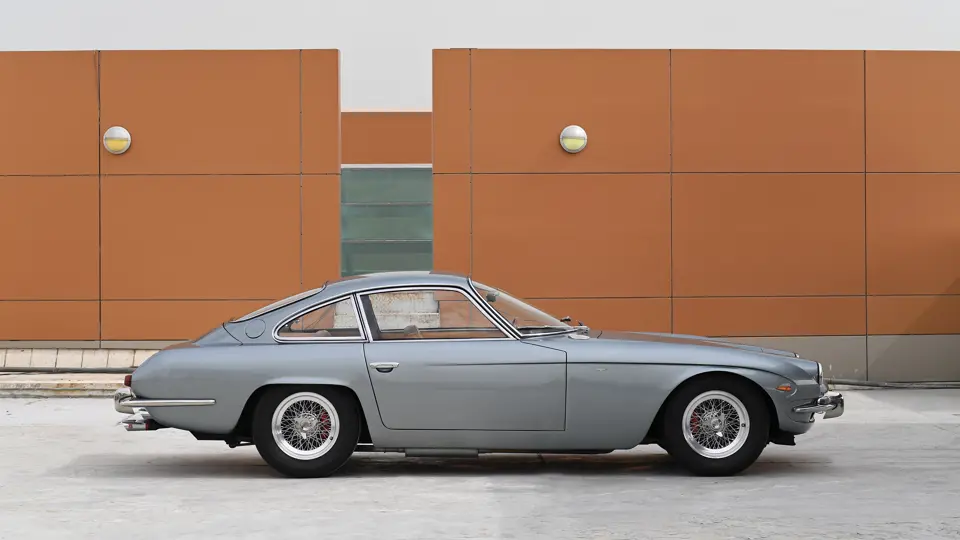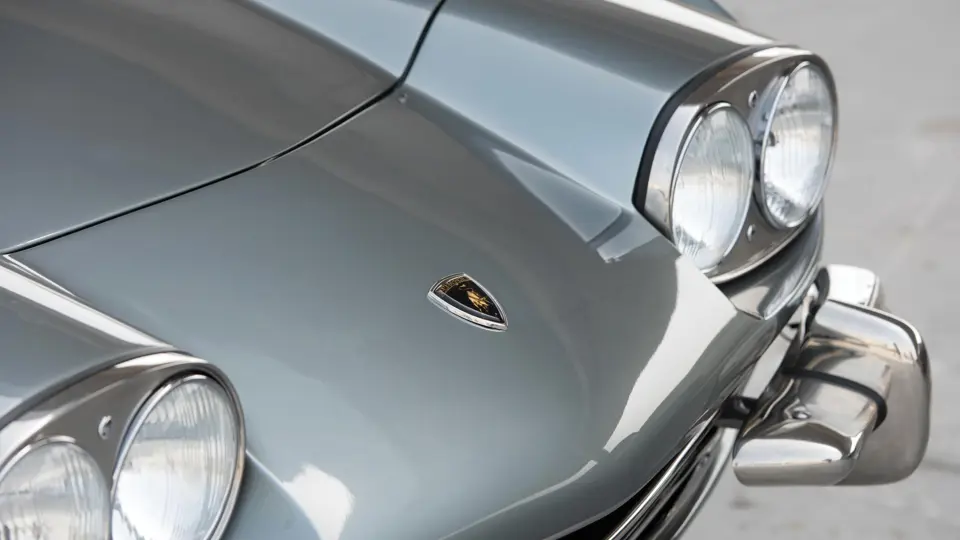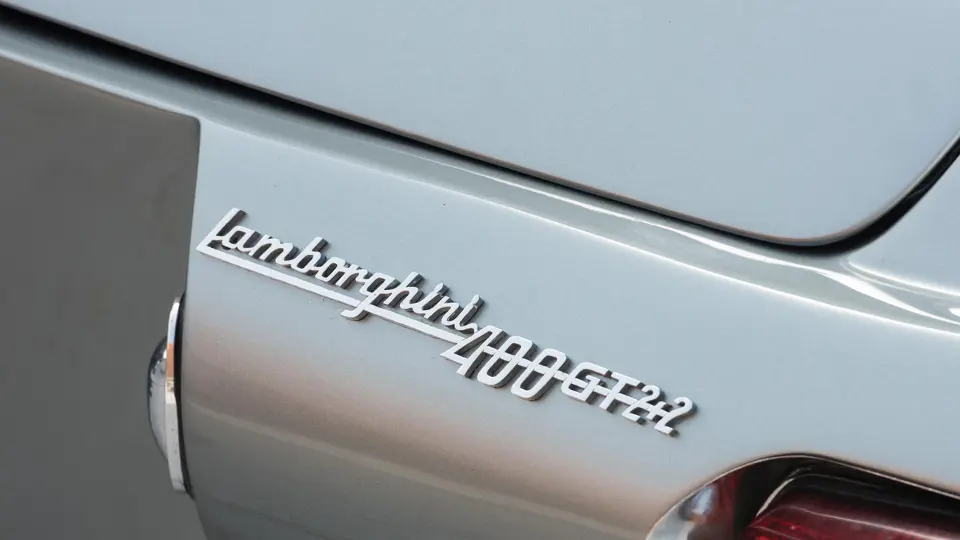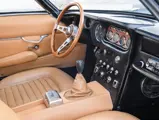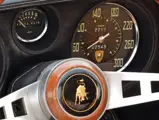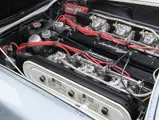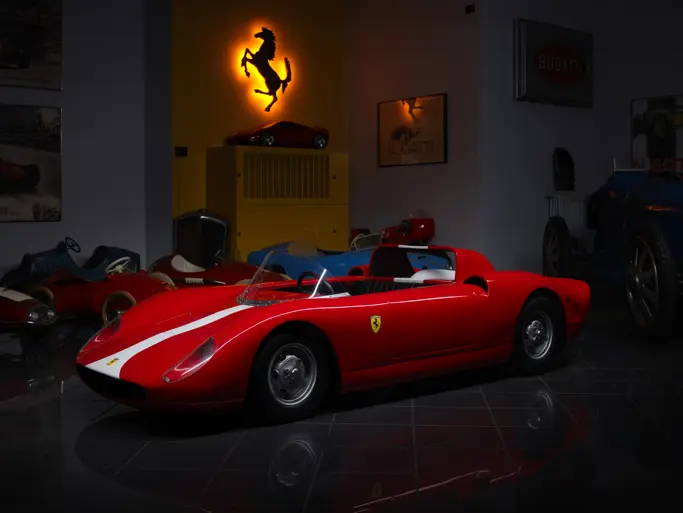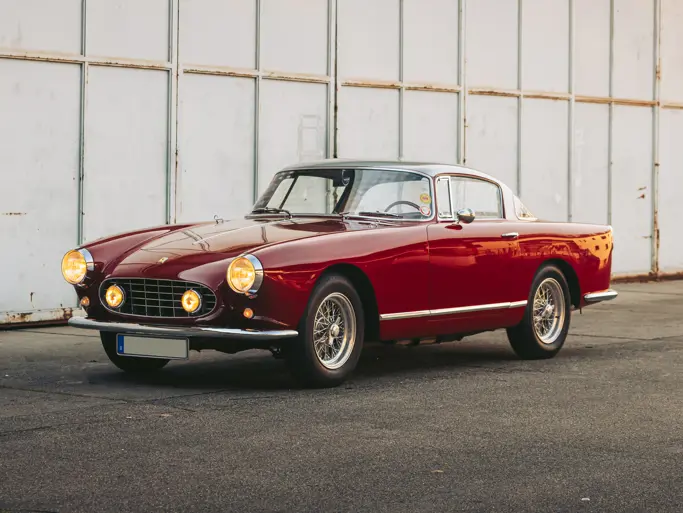320 hp, 3,929 cc DOHC 60-degree V-12 engine, five-speed all-synchromesh transmission, independent front and rear suspension with unequal-length wishbones, coil springs, and anti-roll bars, and four-wheel Girling disc brakes with servo-assist. Wheelbase: 100.4 in.
Ferrucio Lamborghini was a tremendously successful tractor and air conditioning manufacturer who decided to produce his own GT car in the early 1960s, one that reflected his personal tastes. Having made a fortune, he certainly had the resources and wherewithal. His first prototype of the 350 GTV was shown at Turin in November 1963, though it was not ready for production when unveiled. Its chassis was by Neri & Bonacini, and its Scaglione-styled body was by Sargiotto, but it was given a lukewarm reception by the press. This was not the first pretender to Ferrari’s crown to come from Italy, the media said, nor would it be the last. However, Lamborghini was determined to make a success of his new venture. With the engineering well advanced, he passed the styling on to Carrozzeria Touring of Milan for refinement.
Wearing its new coachwork, the new Lamborghini was well received at Geneva in March 1964. Despite the short development period, Touring fabricated a sensational aluminum-alloy superleggera body, while production was also contracted out to Marazzi. The body was certainly different from those of Ferrari and Maserati: its lines were sensuous, and the entire package was undeniably distinctive. The car earned rave reviews for its V-12 performance and excellent handling, courtesy of Bizzarrini. Top speed for the new model was in excess of 150 mph.
Two years later, the car evolved into the 400 GT 2+2, with the addition of vestigial rear seating and subtle styling alterations on the same 100.4-inch wheelbase. Though the style of the 350 GT was preserved, virtually every panel had been revised, and it was given four headlights to differentiate it from its predecessor. The floor pan was lowered, and the roof was raised 2.6 inches; additional interior room was made possible by reversing the upper and lower rear control arms in the front to the rear arrangement. An additional windshield wiper was added, and the body was produced in steel, rather than aluminum, to simplify production. A single 23-gallon fuel tank replaced dual 10.5-gallon tanks on the previous model. The V-12 was enlarged from 3.5- to 4.0-liters, and horsepower was increased from 280 to 320. Suspension was all-around double wishbones with four-wheel disc brakes, along with a Lamborghini-built five-speed gearbox designed by Chief Engineer Gian Paolo Dallara, replacing the earlier ZF-derived gearbox. Just 247 were produced between 1966 and 1968.
This particular 400 GT is from the middle of production in 1967 and is a particularly desirable and attractive example of the breed. Formerly residing with an enthusiast in the Netherlands, it has since joined another significant and well-respected collection, in which it keeps company with some of the finest GT motor cars of the period. The color combination of silver grey over tan hides is certainly of the period, and given the interior’s lovely presentation and handsome patina, it is believed to be largely original to the car. The paintwork was redone recently and the car was treated to a comprehensive servicing, which included the carburetors, brakes, fuel lines, fluid changes, and so forth. A matching-numbers example, its presentation is excellent throughout.
Lamborghini 400 GTs are certainly quite rare, and fine examples become available infrequently. They make for wonderful driver’s cars with proper GT styling that exemplifies Lamborghini’s earliest design efforts and with a recent refinishing, servicing, and matching numbers to boot, this is a particularly attractive example.




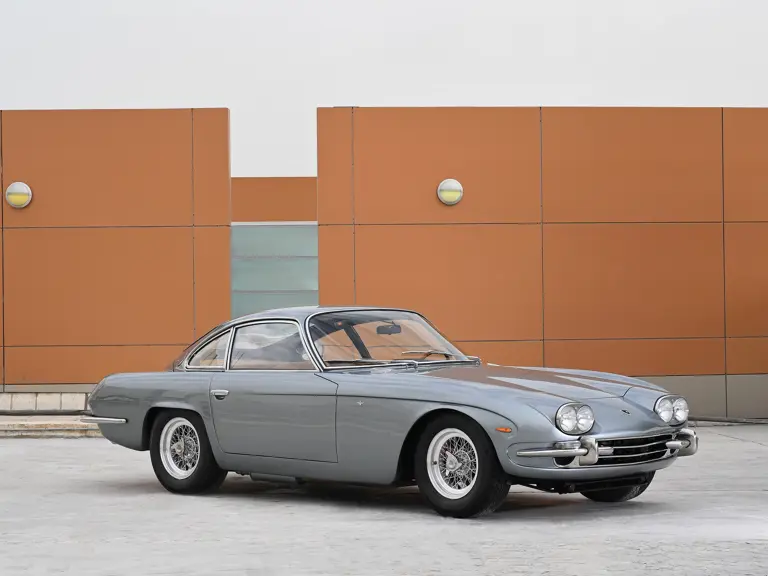
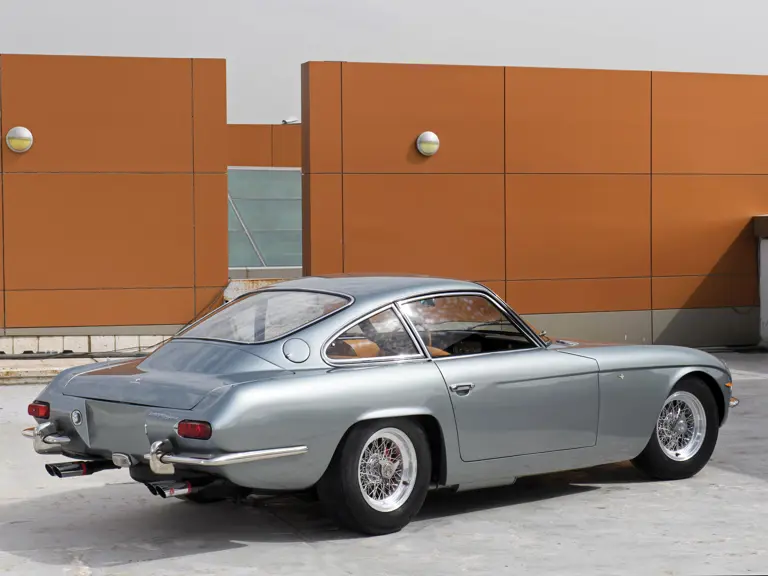
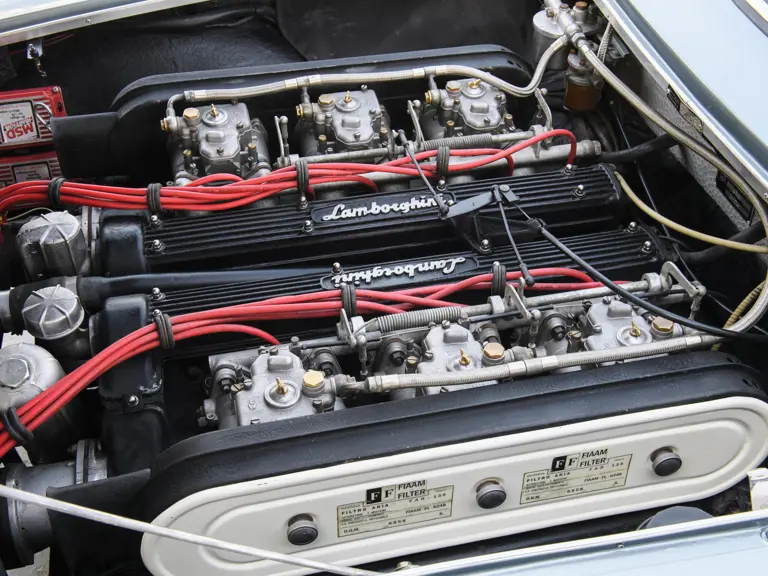
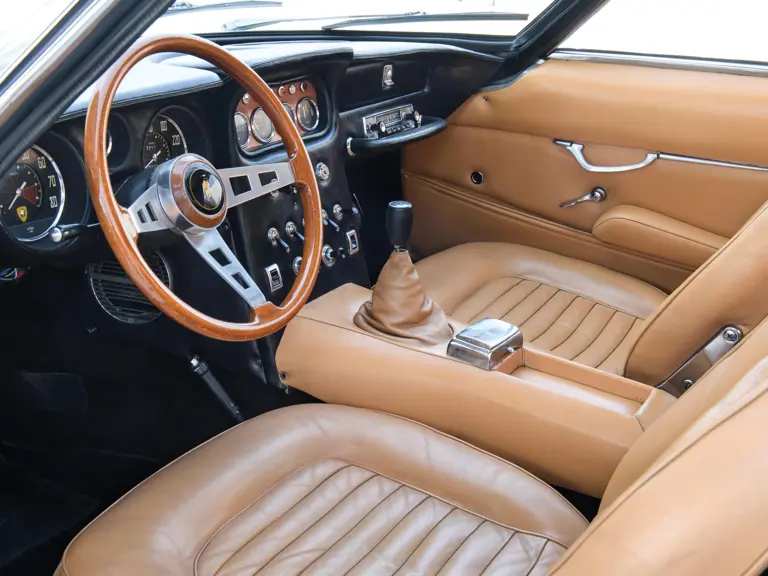
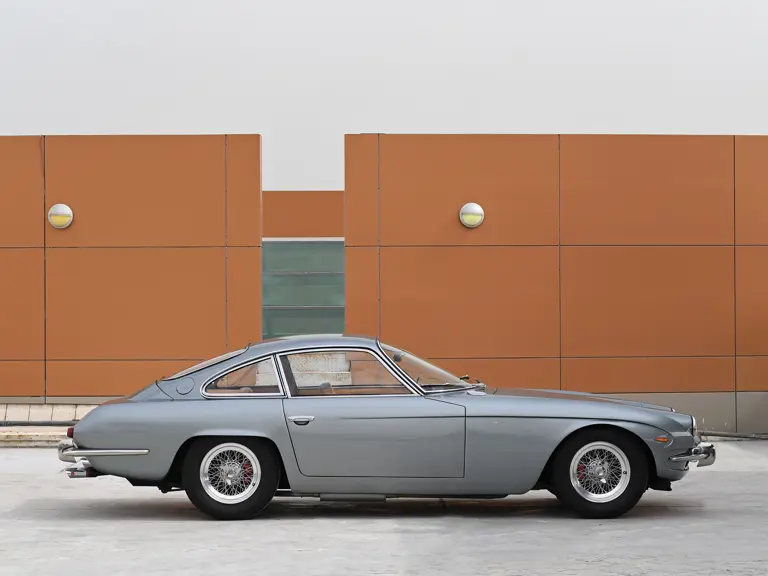
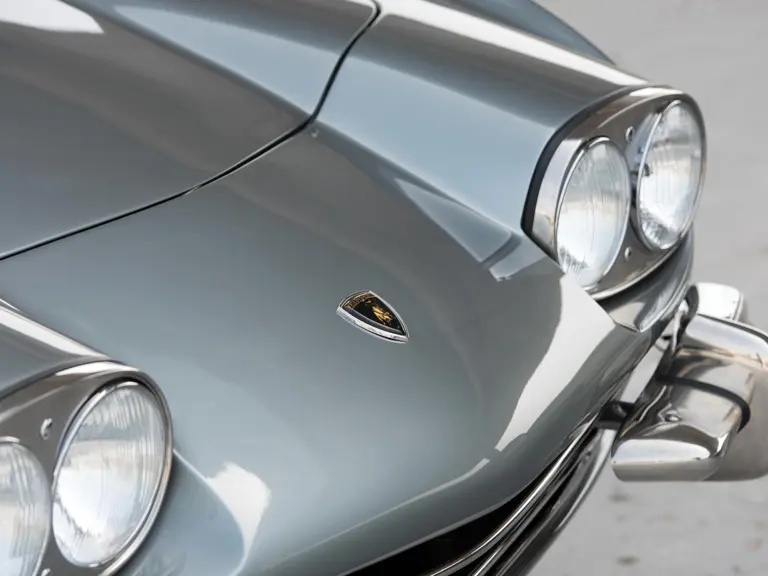
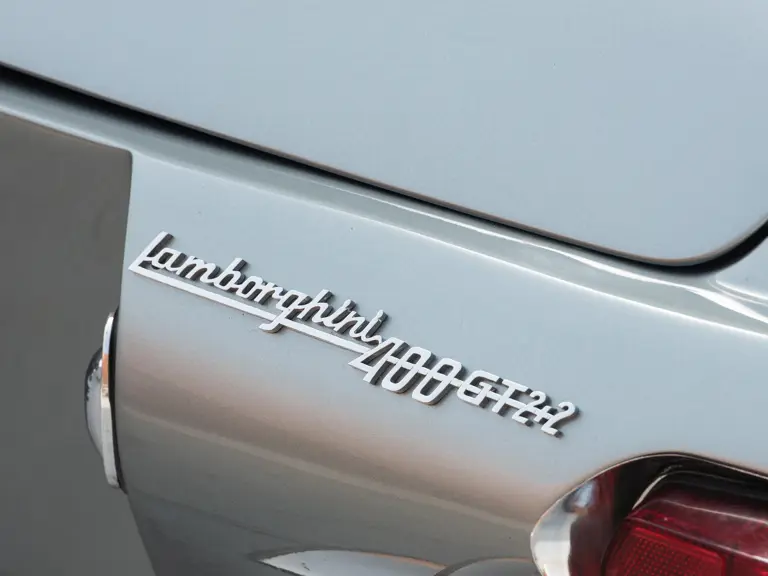
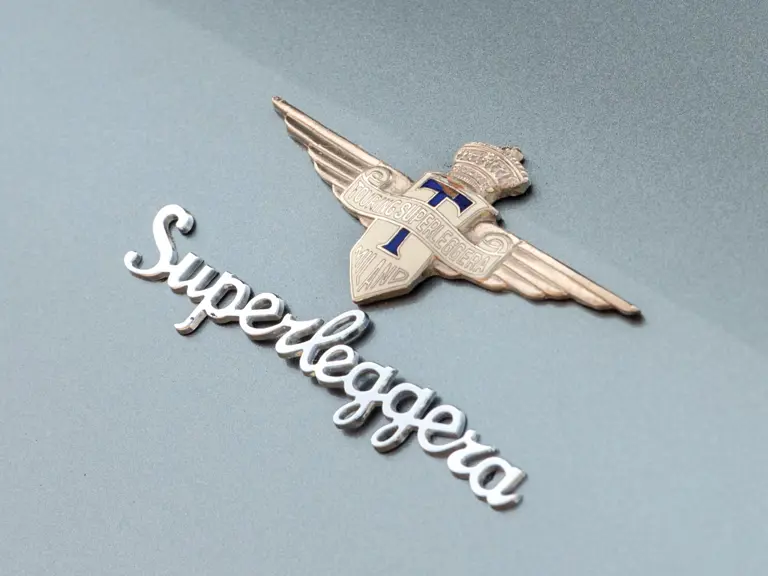

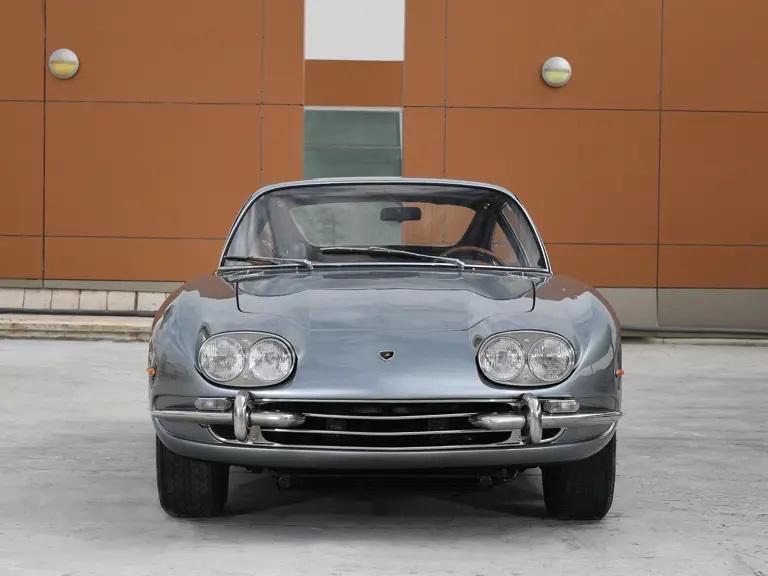

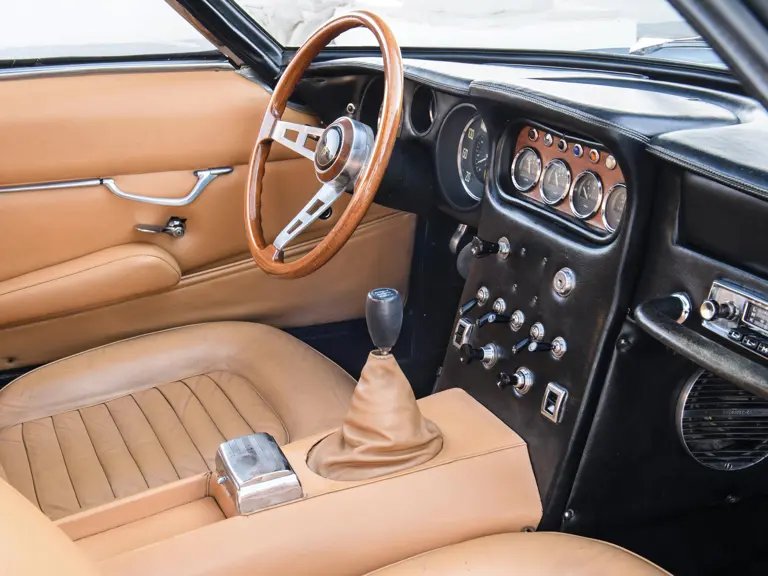
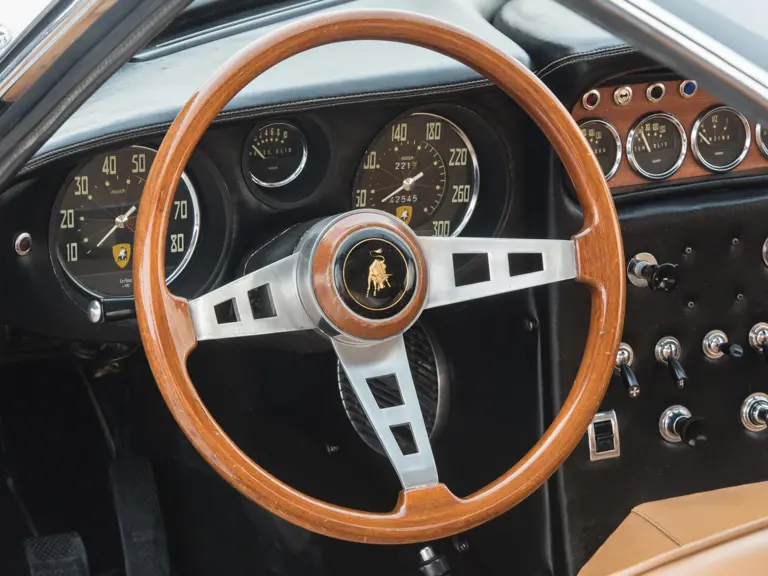


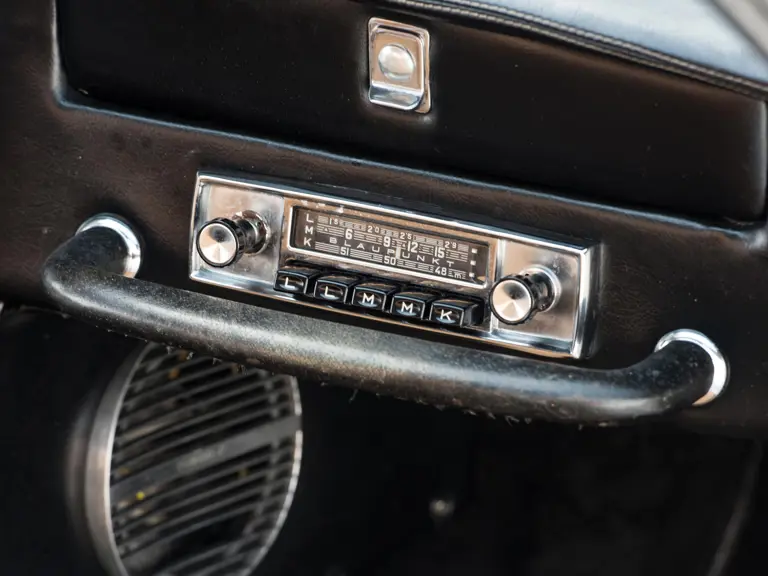


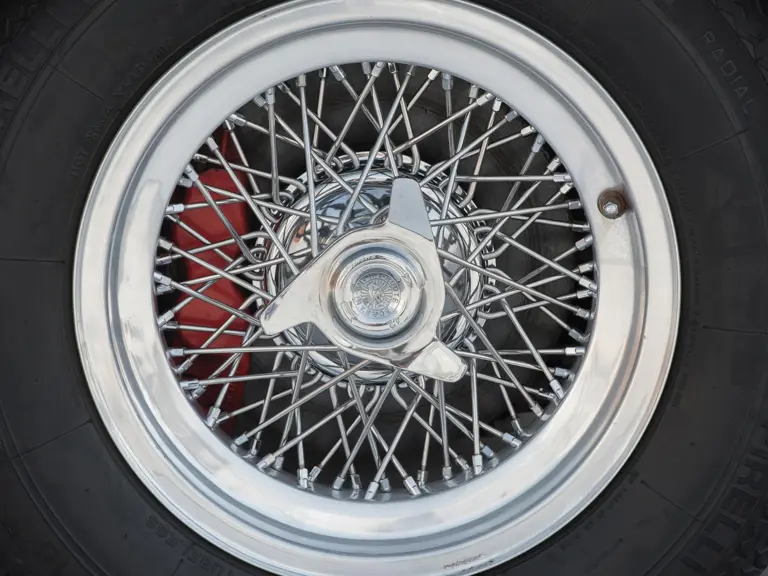
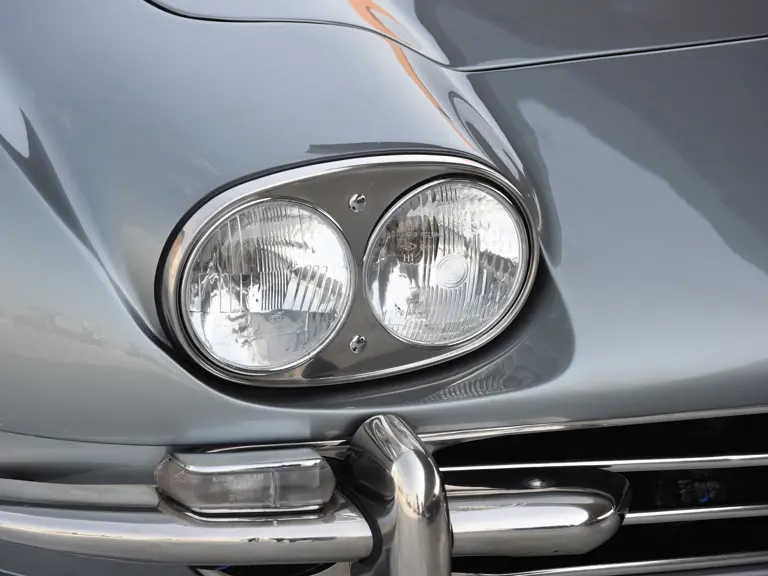

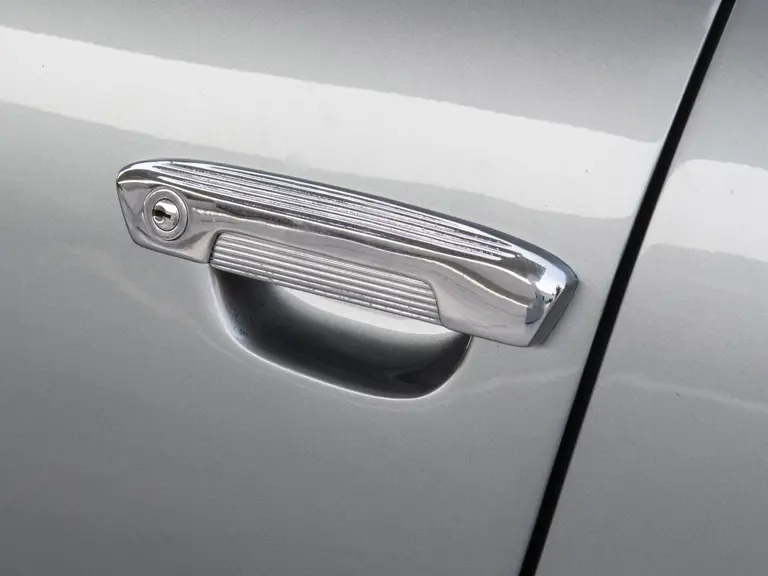
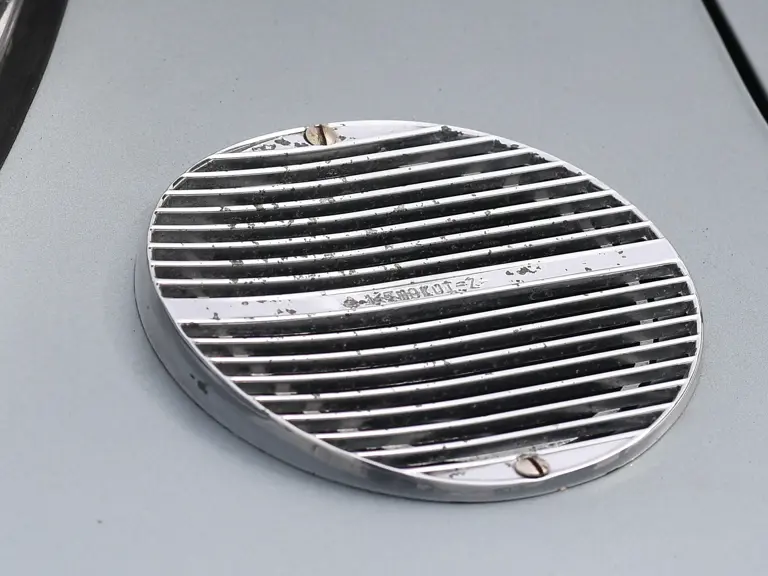
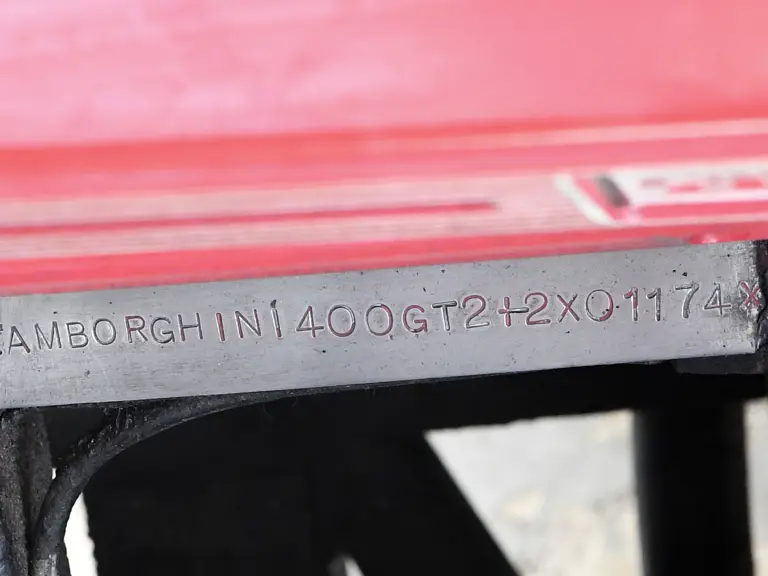
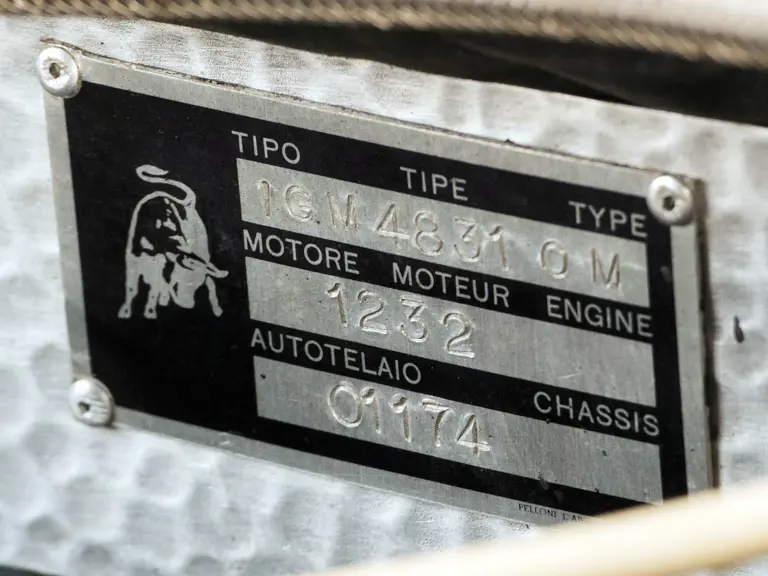
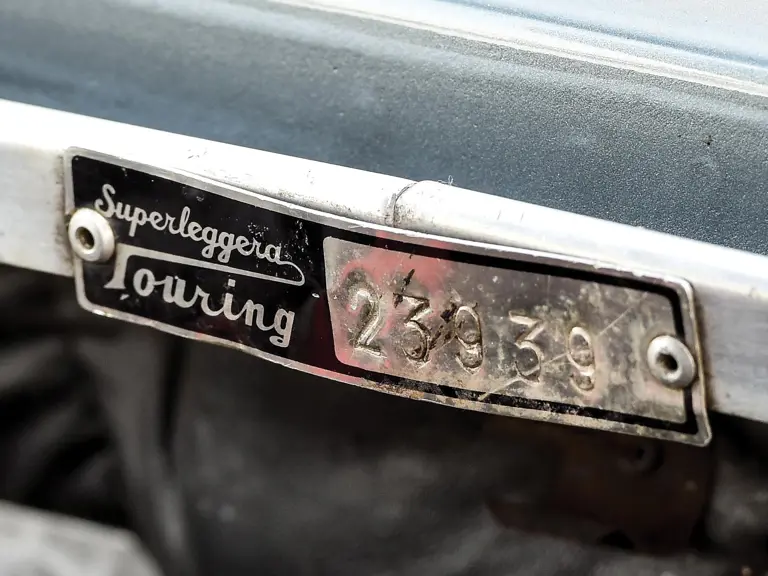
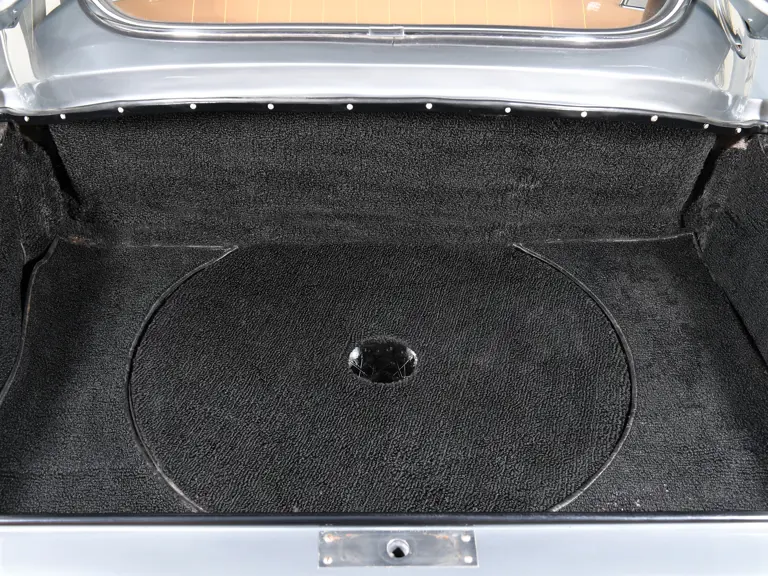
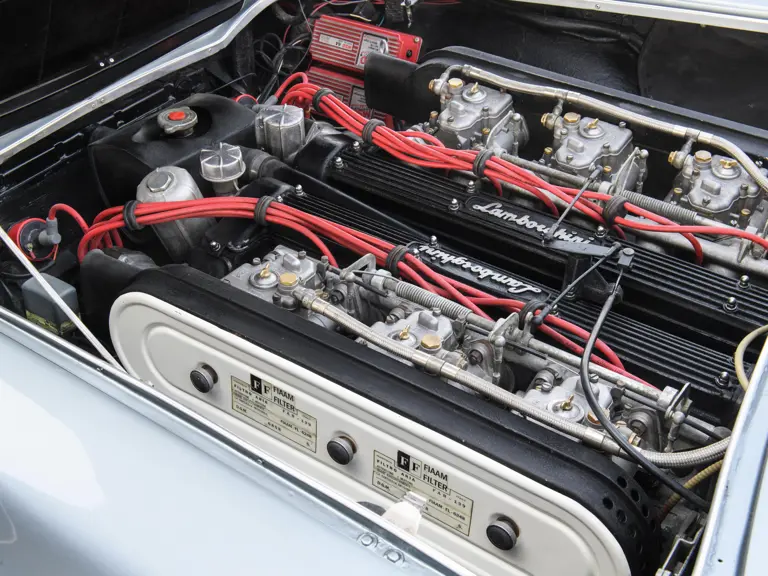
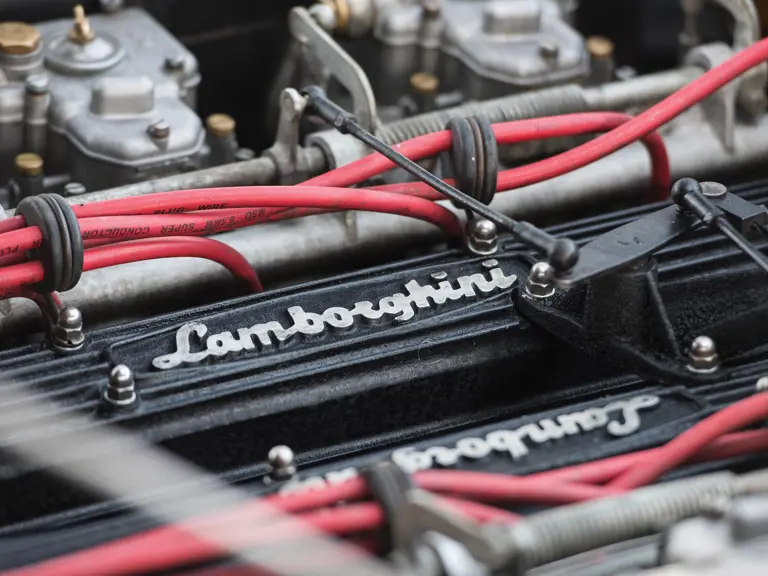
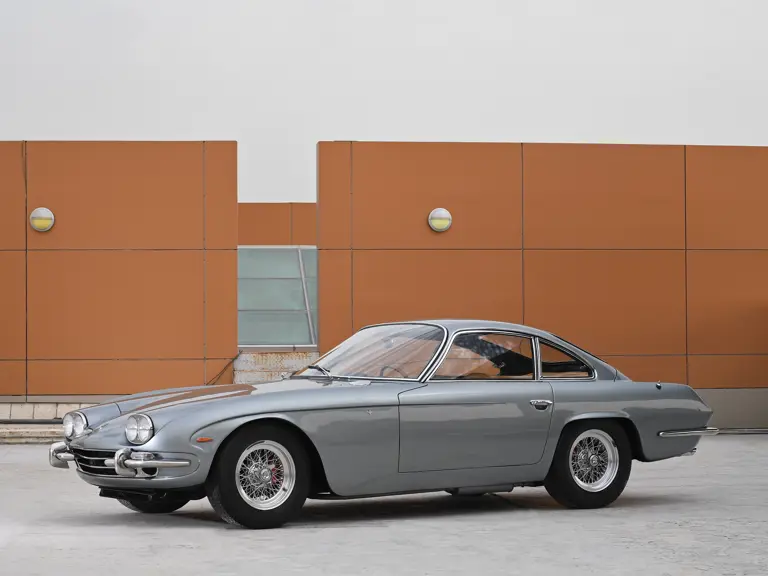

 | Amelia Island, Florida
| Amelia Island, Florida
